Dogs have a habit of eating things they shouldn’t and chocolate is no exception. Even the most diligent pet owners can find themselves in a tricky situation if Fido gets a taste of this toxic treat.
Chocolate can poison dogs, so you’ll want to spring into action if you discover that your pooch has indulged.
We’ll explain the details of chocolate poisoning below, but if your dog just ate chocolate, first do the following:
- Take any remaining chocolate away from your dog and clean up any wrappers or containers so your dog can’t ingest any more chocolate.
- Try to determine what kind of chocolate your dog ate and how much he consumed.
- Contact your vet and follow the advice provided.
You don’t need to panic when faced with a canine cocoa crisis. Instead, stay calm and read on to learn about the way chocolate affects dogs, how different chocolates present varying levels of danger, and the things your vet can do to help treat your pooch.
My Dog Ate Chocolate: Key Takeaways
- Chocolate contains two different compounds that are toxic to dogs: theobromine and caffeine. Dogs can’t metabolize these compounds as quickly or efficiently as humans can, so they can make dogs very sick.
- Chocolate poisoning is serious, and it can kill dogs in some cases. However, many dogs will recover quickly with the help of veterinary care.
- The severity of chocolate poisoning depends on a number of things. Some of the most important factors include your dog’s size, the amount of chocolate consumed, and the type of chocolate your dog ate.
Why Is Chocolate Toxic to Dogs?
As tempting as it may be to give your pooch a sweet treat, chocolate shouldn’t be up for grabs. Unfortunately, chocolate contains a compound called theobromine, which is toxic to dogs.

Dogs have a difficult time breaking down or metabolizing theobromine, also known as xantheose. Simply put, theobromine wreaks havoc on your dog’s body — especially his nervous system, circulatory system, and kidneys.
Theobromine works as a diuretic and smooth muscle wall relaxant, and it stimulates your pup’s heart while simultaneously dilating his blood vessels.
Chocolate also contains varying amounts of caffeine — a close chemical cousin of theobromine — which is also toxic to dogs in large doses.
Not All Chocolate Is the Same: Ranking Chocolate Dangers for Dogs
In order to understand the scope of the situation, it’s important to figure out what kind of chocolate your dog was eating. Chocolates have varying levels of toxicity depending on their theobromine content.
In general, the higher the cocoa content, the more theobromine is present, and therefore, the higher the danger.
Here are a couple of common chocolate types ranked in order of toxicity, starting with the most toxic type with the highest theobromine concentration.
- Cocoa Powder
- Unsweetened Baker’s Chocolate
- Dark Chocolate
- Milk Chocolate
- White Chocolate
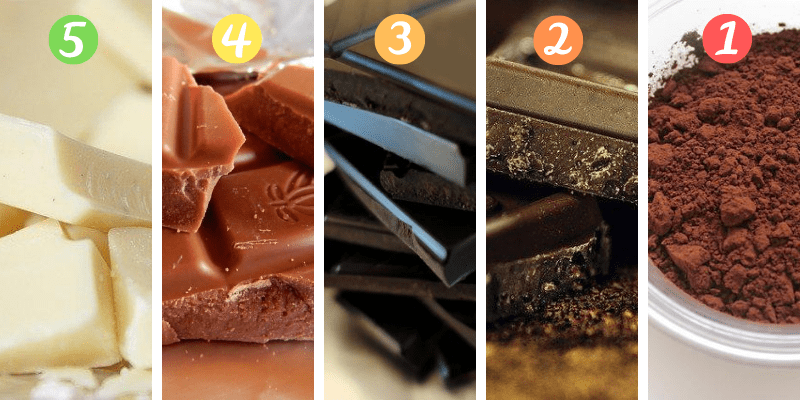
If it’s a traditional chocolate bar, be sure to pay attention to the cocoa percentage that’s sometimes listed on the packaging. The percentage on the bar lets you know how much cocoa is present in the chocolate.
A bar that’s 70% cocoa is more toxic to Fido than a bar that’s 40% cocoa.
This toxicity meter is a great resource for calculating the potential danger. Simply input your dog’s body weight, the type of chocolate consumed, and the amount eaten to get a quick reading on Fido.
However, you’ll still want to contact your veterinarian as soon as possible with this information since every dog is different.
Here are a couple of common chocolate culprits along with their approximate theobromine levels for reference:
- 1 Kit Kat Bar — 48.7mg of theobromine
- 9 Hershey Kisses — 61 mg of theobromine
- 1 Full Dark Chocolate Bar (70 – 85% cacao solids) — 810 mg of theobromine
- 1 Cup Dutch Cocoa Powder — 2266 mg of theobromine
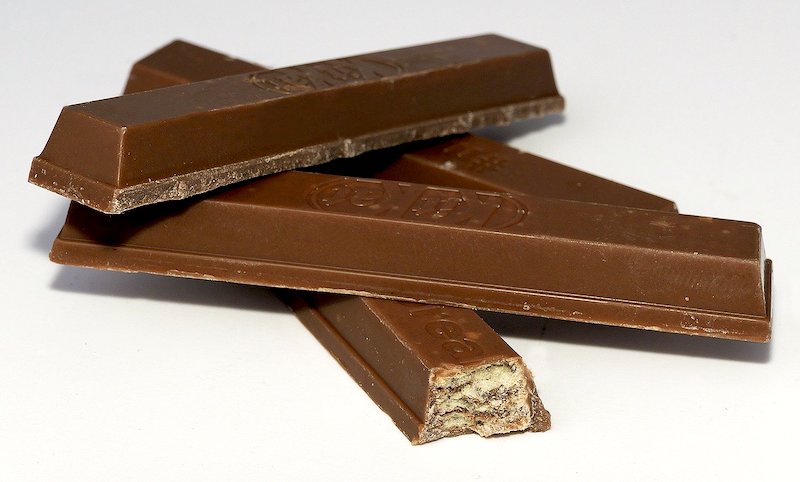
Signs of Chocolate Poisoning in Dogs
Chocolate poisoning comes with a whole range of symptoms that your pooch may or may not experience. Usually, symptoms will show up within 6 to 12 hours of consumption, and they may last up to 72 hours.
Be extra vigilant if your dog is older or has a heart condition, as these factors may make your dog may be more susceptible to sudden death or other serious symptoms of chocolate toxicity.

Symptoms of chocolate poisoning in dogs may include:
- Vomiting and stomach upset
- Elevated temperature
- Diarrhea
- Restlessness
- Seizures
- Increased heart rate
- Low blood pressure
- Increased urination
- Increased thirst
Generally speaking, your pooch can start exhibiting symptoms of chocolate toxicity anytime he consumes about 20 milligrams of theobromine per kilogram of body weight.
Cardiac symptoms arise somewhere around 40 milligrams per kilogram of body weight with symptoms like seizures occurring at amounts greater than 60 milligrams per kilogram of body weight.
It’s hard for most owners to intuitively grasp how much chocolate it takes to sicken a dog. So, we’ve put together a few examples below.
Simply put, small dogs are far more likely to become sick from eating chocolate than large dogs are.
However, the type of chocolate consumed is also an important factor.
- To reach the 20 milligrams-of-theobromine-per kilogram level at which symptoms usually appear, a 55-pound dog would need to consume 500 milligrams of theobromine. That’s roughly half a bar of dark chocolate or a little less than 1/4-cup of cocoa powder.
- By contrast, a 15-pound dog would only need to consume about 136 milligrams of theobromine to reach the 20-milligrams-per-kilogram threshold. He could approach this level by simply eating a chocolate donut.
- A very small dog needn’t eat much at all to become sick, as a 5-pound pooch would only need to consume about 45 milligrams of theobromine to begin displaying symptoms. That’s roughly equivalent to a small milk chocolate candy bar or half a teaspoon of chocolate baking powder.
What Should You Do If Your Dog Eats Chocolate?
As soon as you find out that your dog has ingested chocolate, give your veterinarian a call immediately.
Even if your pooch seems to be acting normal, it’s always a good idea to stay on the safe side. Remember that it may take up to 12 hours for your dog to start showing serious symptoms.
You’ll want to have your pet’s weight, health history, the amount and kind of chocolate he ate, and any meds he’s taking ready so that you can get the best advice possible.
From there, your vet will be able to give you a care plan to execute from home or request that you bring Fido into the clinic.
If your usual veterinarian isn’t available, you may want to try Ask a Vet. Alternatively, you can contact a 24-hour pet facility in your area or the Pet Poison Helpline.
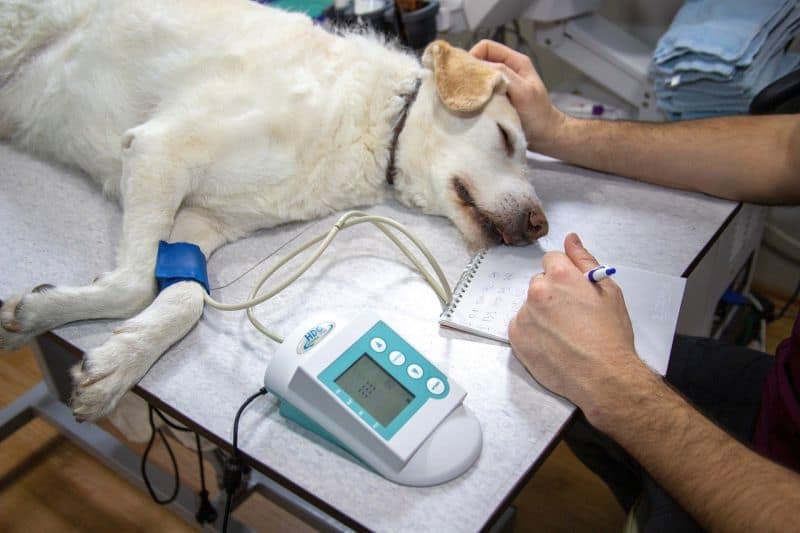
I’ve personally had several experiences with dogs eating chocolate over the years.
My 65-pound childhood dog once stole a bag of Lint Truffles off the countertop containing milk chocolates and dark chocolates. He ate them all. But he never suffered any symptoms, nor required treatment — he was completely fine.
Another time, I was pet sitting a German shepherd who ate a bar of 75% cacao dark chocolate. I used an online toxicity calculator that gave me an orange rating, basically saying the dog might need medical attention. Honestly, if it has been my own dog, I would have kept him home and monitored him, but since it was someone else’s dog, I didn’t want to risk it.
I took her to the emergency vet clinic, as instructed by the staff over the phone. They took her vitals and said she was fine — she didn’t need any veterinary care or treatment.
The vet said that the amount of chocolate the dog has ingested really wasn’t enough to do any harm (despite being an entire bar of dark chocolate). When I asked why then – on the phone – had they insisted I come in, the vet admitted that they usually always tell owners to bring their dogs in, just in case.
While I have no problem erring on the side of caution when it comes to a dog’s wellbeing, this was a frustrating experience for me, as this unexpected emergency vet bill was a significant blow at the time.
The takeaway is that while chocolate is indeed a dangerous ingredient for dogs, large dogs have to eat a pretty significant quantity to fall ill.
Of course we advise always contacting your vet and following the advice provided, but there’s no reason to panic if you find that your dog has eaten chocolate — especially if your pooch is large.
What To Expect At The Vet
If your vet requests that you bring in your pooch, be sure to get there as quickly and safely as possible. Since chocolate toxicity can be extremely serious, your veterinary team will likely be anticipating your arrival.
Once your vet is with your pooch, your veterinarian may execute one of the following procedures to help Fido:
- Induce Vomiting — If Fido consumed chocolate less than 2 hours ago, your veterinarian may be able to make your dog throw up and purge a good portion of the chocolate from your pup’s system before it’s digested. This is another reason why it’s important to take action quickly when you learn that your dog has ingested chocolate.
- Administer Activated Charcoal — Your pooch might also receive activated charcoal to help absorb some of the toxins in his gastrointestinal tract before they can become absorbed by the body.
- Administer Medications and Fluids — Every dog reacts differently to toxic substances, so your veterinarian may need to give your dog medications and/or supplemental fluids to treat symptoms of chocolate toxicity.
- Provide Overnight Care — Depending on the severity of the situation, your pooch may have to stay overnight at the veterinarian facility for observation.
Prevention Is Always the Best Bet
The best way to avoid chocolate toxicity in dogs is to focus on prevention. Though necessary, vet bills from serious toxicity cases can cost a pretty penny, so keeping your dog away from chocolate is great for your dog’s well being and your wallet.
Here are a couple of ways to keep your canine away from cocoa:
- Supervision — Especially while your dog is a puppy, it’s important that your pooch is properly supervised. A high-quality crate can be a great place for your dog to relax for short periods of time when you’re unable to be by his side. You can also use dog gates to keep your canine out of trouble.
- Storage — Store your chocolate in high, secure cabinets or other areas that are inaccessible to your dog. Don’t just leave a bowl of chocolate laying out on your coffee table.
- Be Careful Around the Holidays — Holidays usually bring about an onslaught of sweets, and chocolate is no exception. Be extra careful around this time of year and make sure any visiting family members or friends are on the same page. It’s difficult to resist begging puppy eyes, but vitally important to keep your dog healthy.
- Locking Trash Cans — Make sure that you keep your trashcans properly closed and locked so that Fido won’t be able to get into anything he shouldn’t.
- Teach Your Dog The “Drop It” Command — A strong “drop it” command may be extremely helpful if you catch your dog in the act. This command can also be useful for preventing your dog from eating “street snacks” while you’re on a walk.
- Save the Chocolate For Yourself — There are plenty of ways to treat your pooch safely without chocolate. If you’re looking for a dog-safe chocolate alternative, carob is an excellent choice.
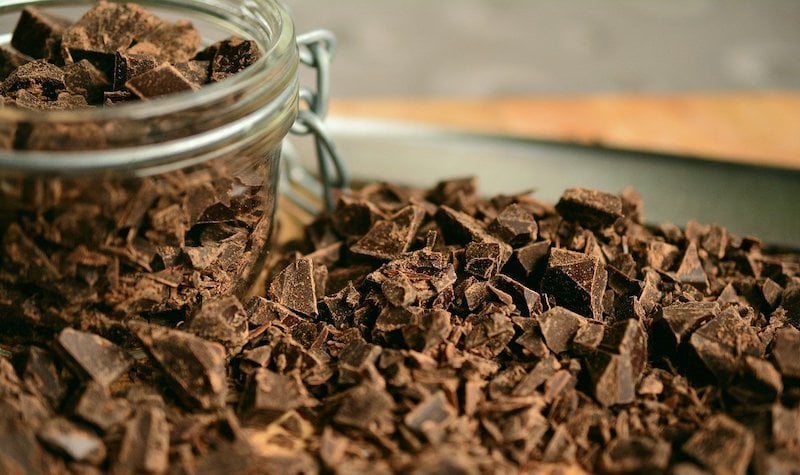
Dogs & Chocolate FAQs
We’ve tried to answer some of the most common canine chocolate questions owners often have below! But don’t hesitate to share any other questions you may have in the comments!
How much chocolate does it take to kill a dog?
The amount of chocolate necessary to kill a dog will vary based on a variety of factors, including the type of chocolate, the amount of theobromine it contains, and your dog’s individual biology. That said, dogs often start showing serious symptoms (including things like cardiac problems and seizures) when they ingest approximately 40 to 60 milligrams of theobromine per kilogram of body weight.
How long does it take for a dog to get sick after eating chocolate?
The onset of symptoms following chocolate ingestion will vary from one dog to the next, but they generally start in about 6 to 12 hours.
What home remedy can I give my dog for chocolate ingestion?
There are no safe home remedies you can give your dog for chocolate ingestion without your vet’s guidance. Simply contact your vet and heed the advice provided.
Can a Hershey’s Kiss kill a dog?
A single Hershey’s Kiss contains only about 8 milligrams of theobromine. So, even a 5-pound Yorkie would need to eat about 8 Hershey’s Kisses to achieve the 20 milligrams-per-kilogram level at which symptoms begin to appear. But, you should still contact your vet, just to be safe.
What if my dog ate chocolate cake or brownies?
It doesn’t matter what form the chocolate comes in — it is the amount of theobromine (and, to a lesser extent, the caffeine) the chocolate contains that is the important factor. That said, baked goods are often made with cocoa powder, which has quite a lot of theobromine. Accordingly, baked chocolate items are likely more dangerous than a typical, milk chocolate candy bar.
Should I induce vomiting if my dog eats some chocolate?
Only if your vet advises you to do so. Chocolate is unlikely to cause further damage while traveling back up the esophagus (like some caustic chemicals can), but you should still refrain from doing so unless instructed by your vet.
***
While chocolate may be irresistibly delicious, it can be extremely toxic to our furry best friends. In order to keep Fido safe, it’s important to store chocolate safely and take quick action if there’s unexpected canine cocoa consumption.
Has your dog ever accidentally consumed chocolate? How did you navigate the emergency? We’d love to hear about your experience in the comments below.
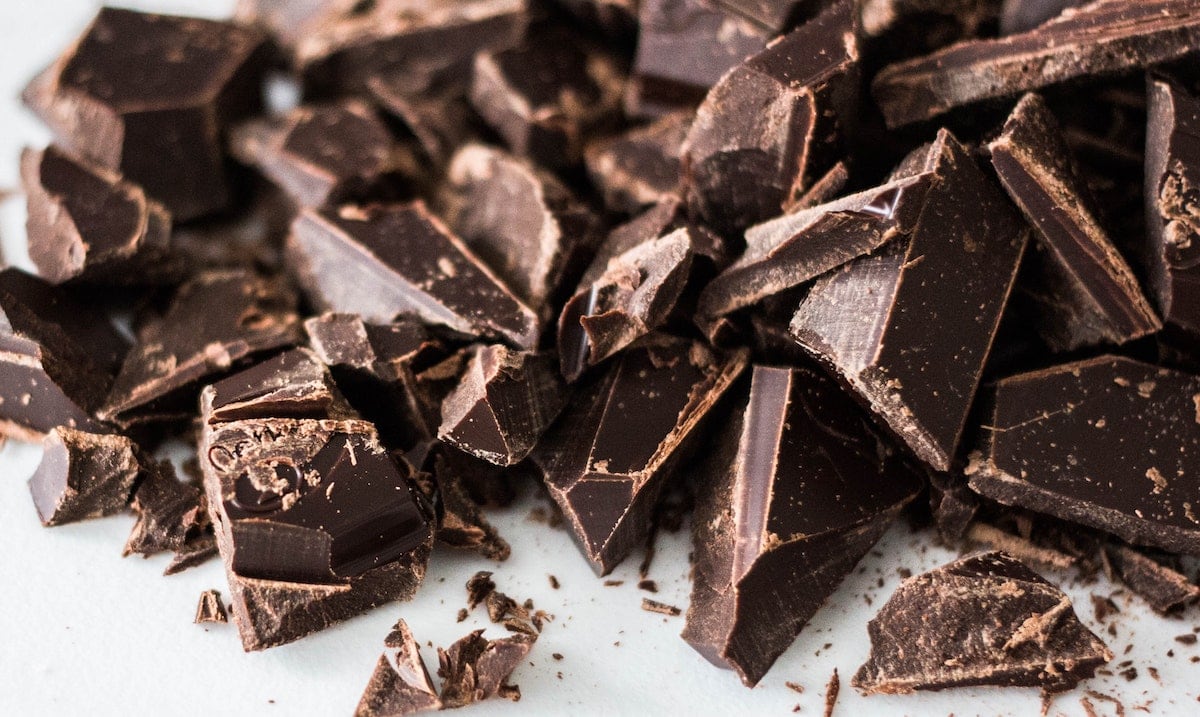


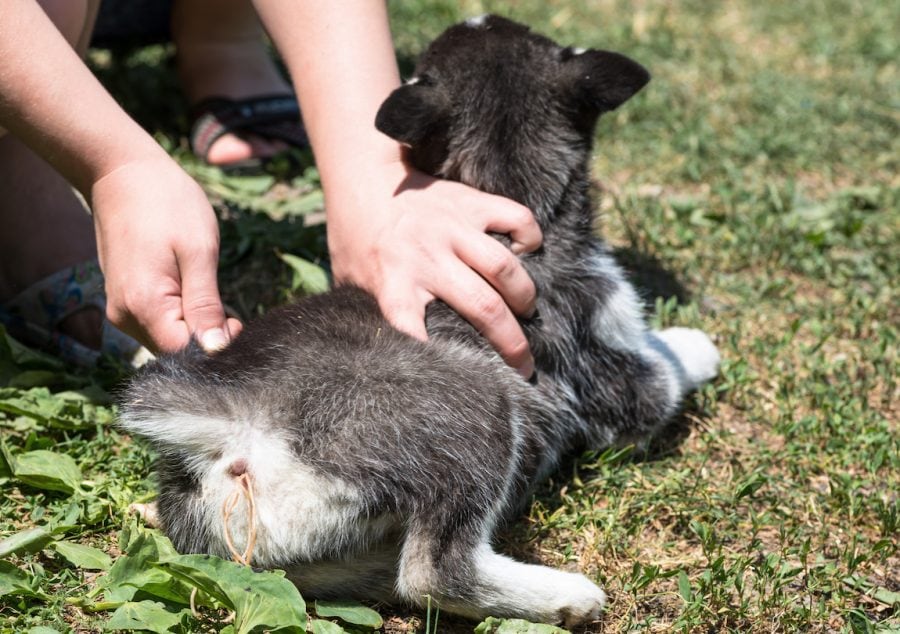


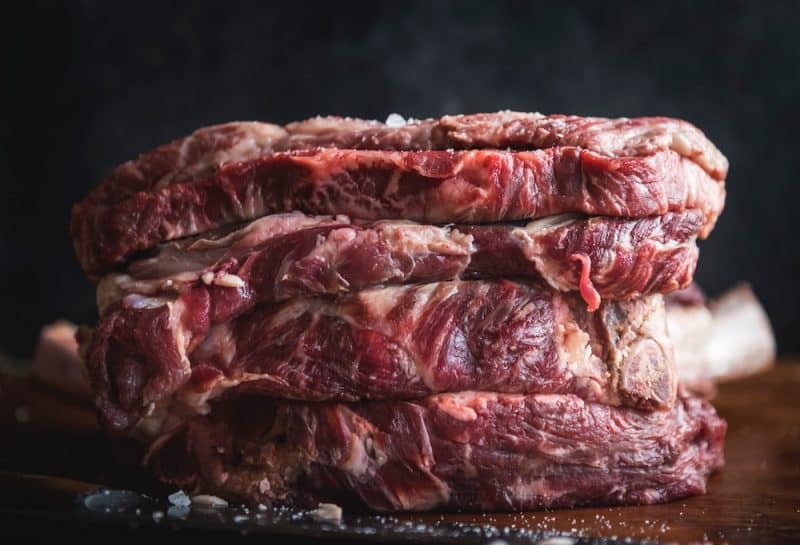
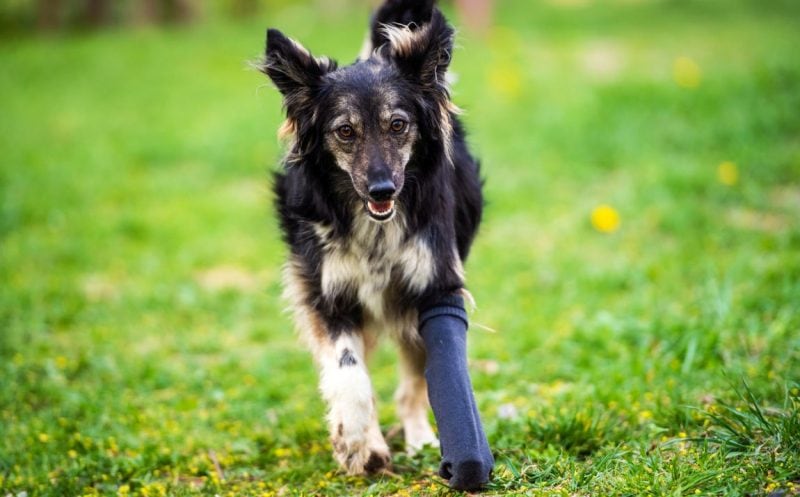
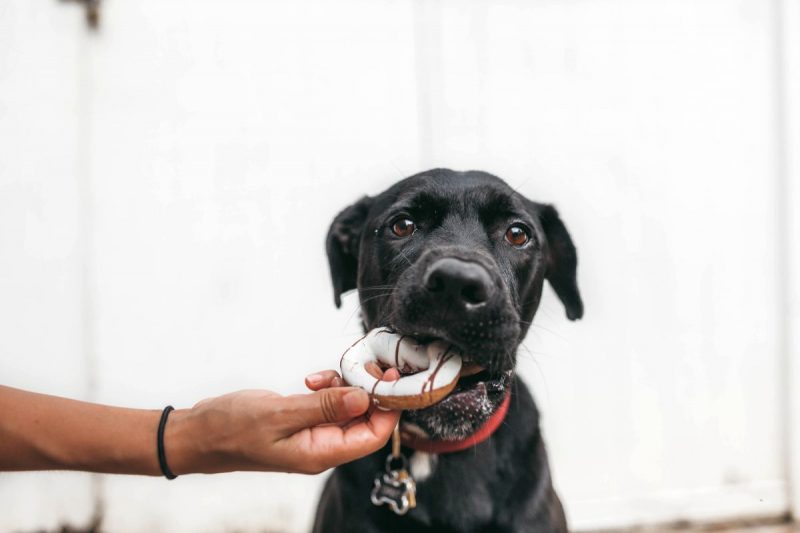
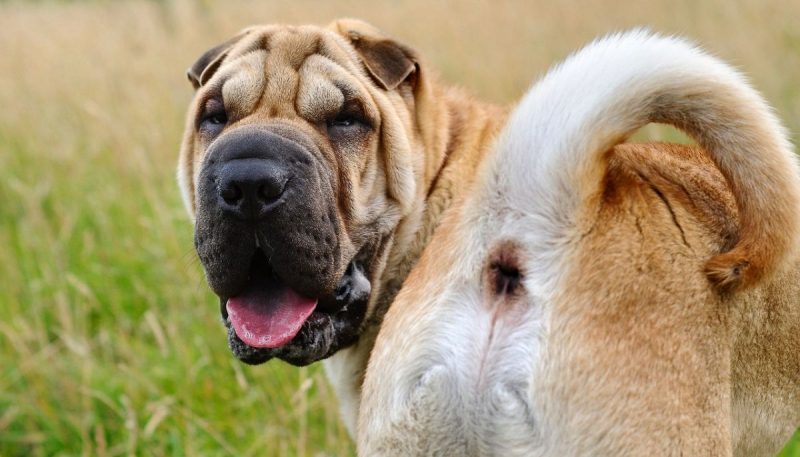

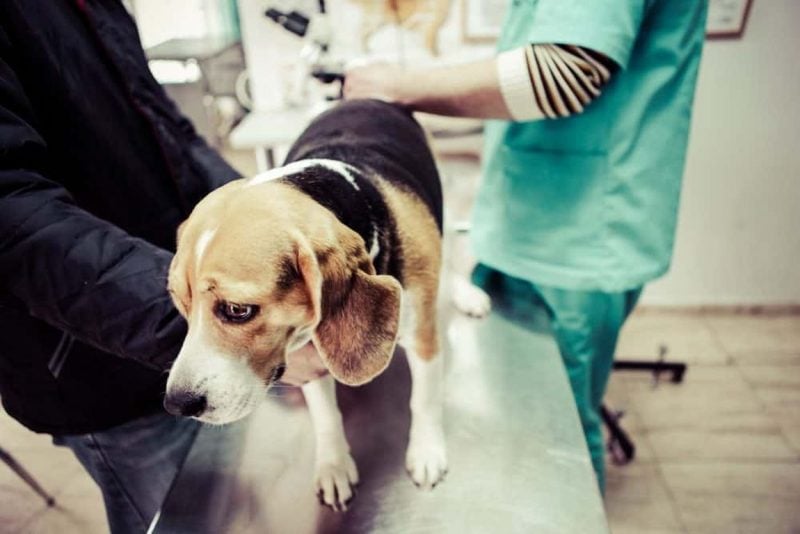

Leave a Comment